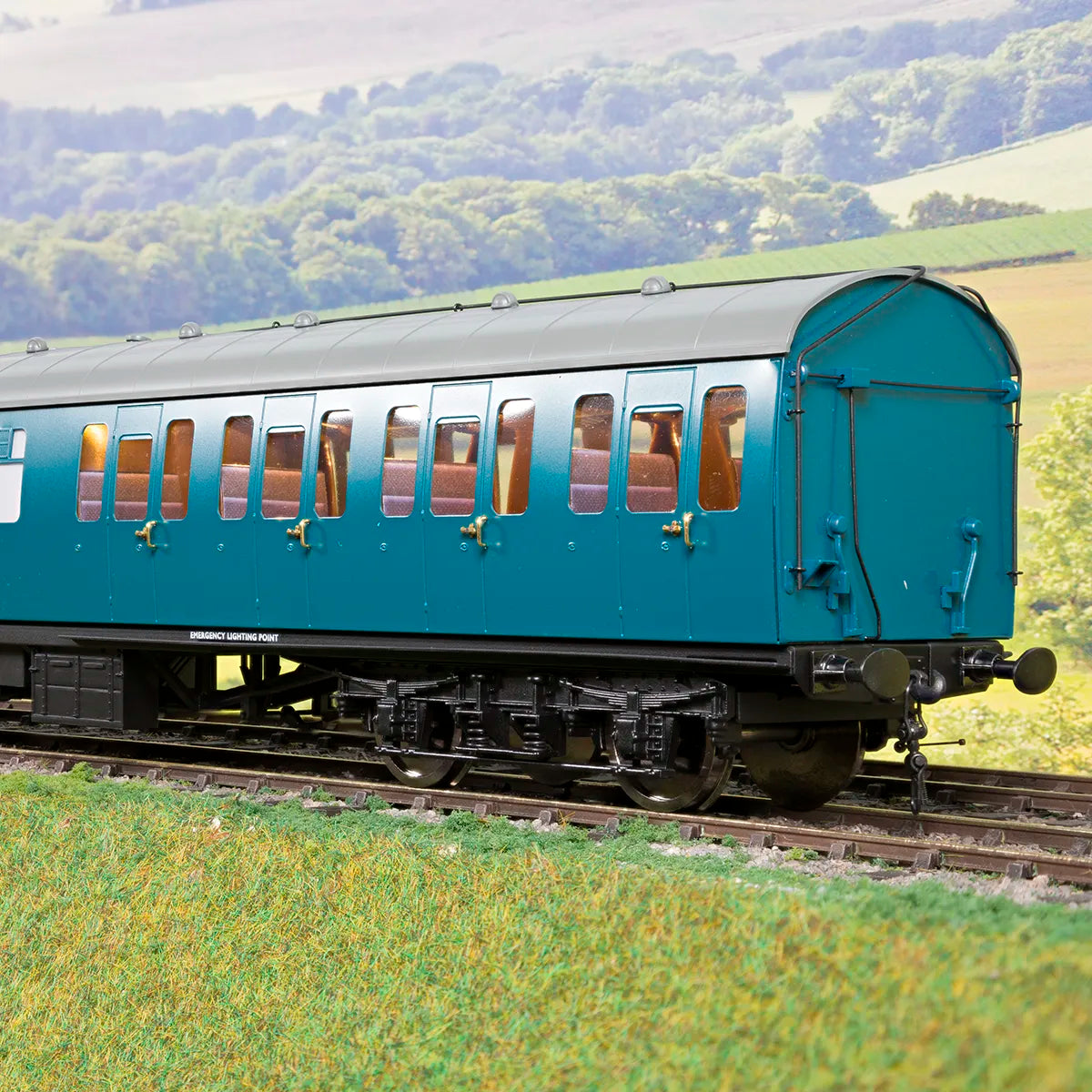The MK1 Suburban coaches were our second joint project with Darstaed Finescale and the first to be produced exclusively for us. Their compact form (our model depicts the 57ft wheelbase variant) makes them particularly useful for small layouts, where every inch is precious.
As with all our carriages, the Suburbans feature brass sides, which are painted (not printed) in multiple layers – just like the real thing. Die-cast bogies and underframes further enhance the models’ weight and robustness, with highly detailed and lit interiors completing the picture.
Whether you’re new to O gauge or looking to make a useful new addition to your carriage fleet, you can’t go far wrong with a ‘Sub’ or two on the roster.
Masters of the mundane
In the world of model railways, it’s often engines that steal the limelight. But as with any cast of characters, the supporting players are just as important – and at Ellis Clark Trains, we love an unsung hero. The MK1 Suburban coaches were our second joint project with Darstaed and the first to be produced exclusively for us. Whether you’re new to O gauge or looking to make a useful new addition to your carriage fleet, you can’t go far wrong with a ‘Sub’ or two on the roster. So we thought it was time to revisit these award-winning models and get under the skin of what makes them special.
Masters of the mundane
In the world of model railways, it’s often engines that steal the limelight. But as with any cast of characters, the supporting players are just as important – and at Ellis Clark Trains, we love an unsung hero. The MK1 Suburban coaches were our second joint project with Darstaed and the first to be produced exclusively for us. Whether you’re new to O gauge or looking to make a useful new addition to your carriage fleet, you can’t go far wrong with a ‘Sub’ or two on the roster. So we thought it was time to revisit these award-winning models and get under the skin of what makes them special.
Howard Smith, BRM, November 2019
Howard Smith, BRM, November 2019


